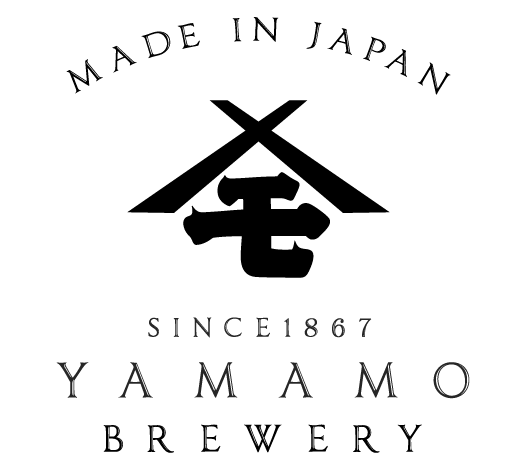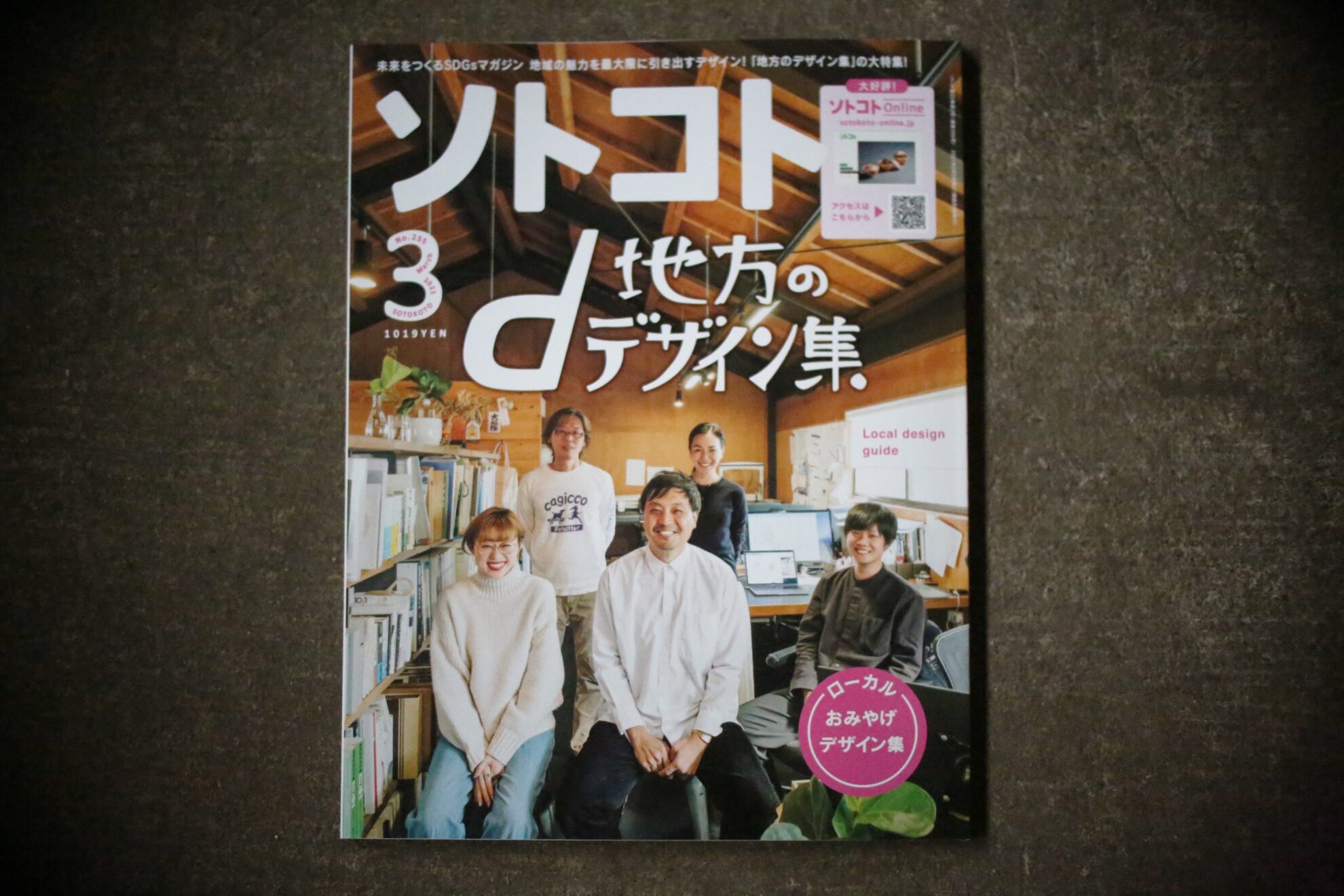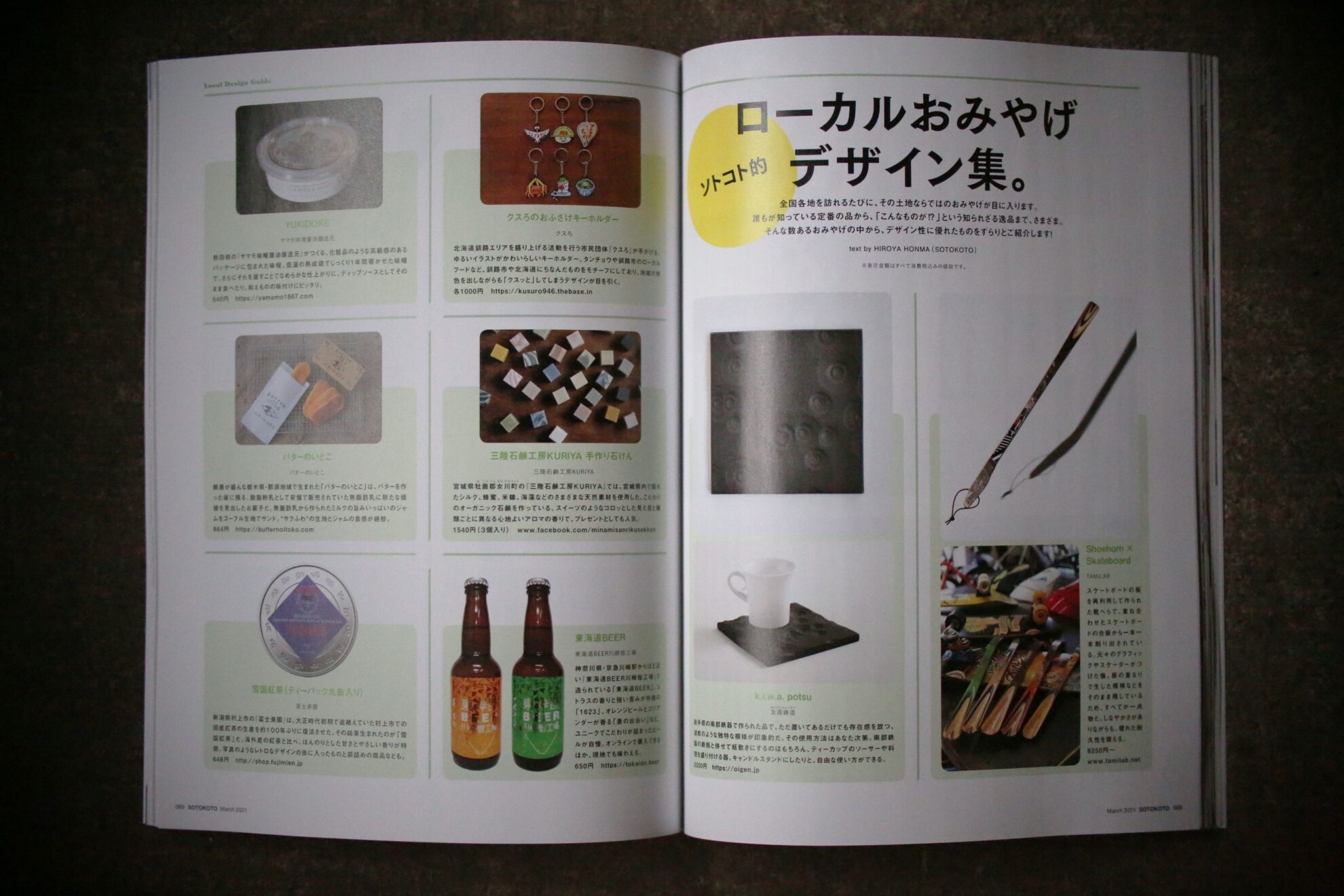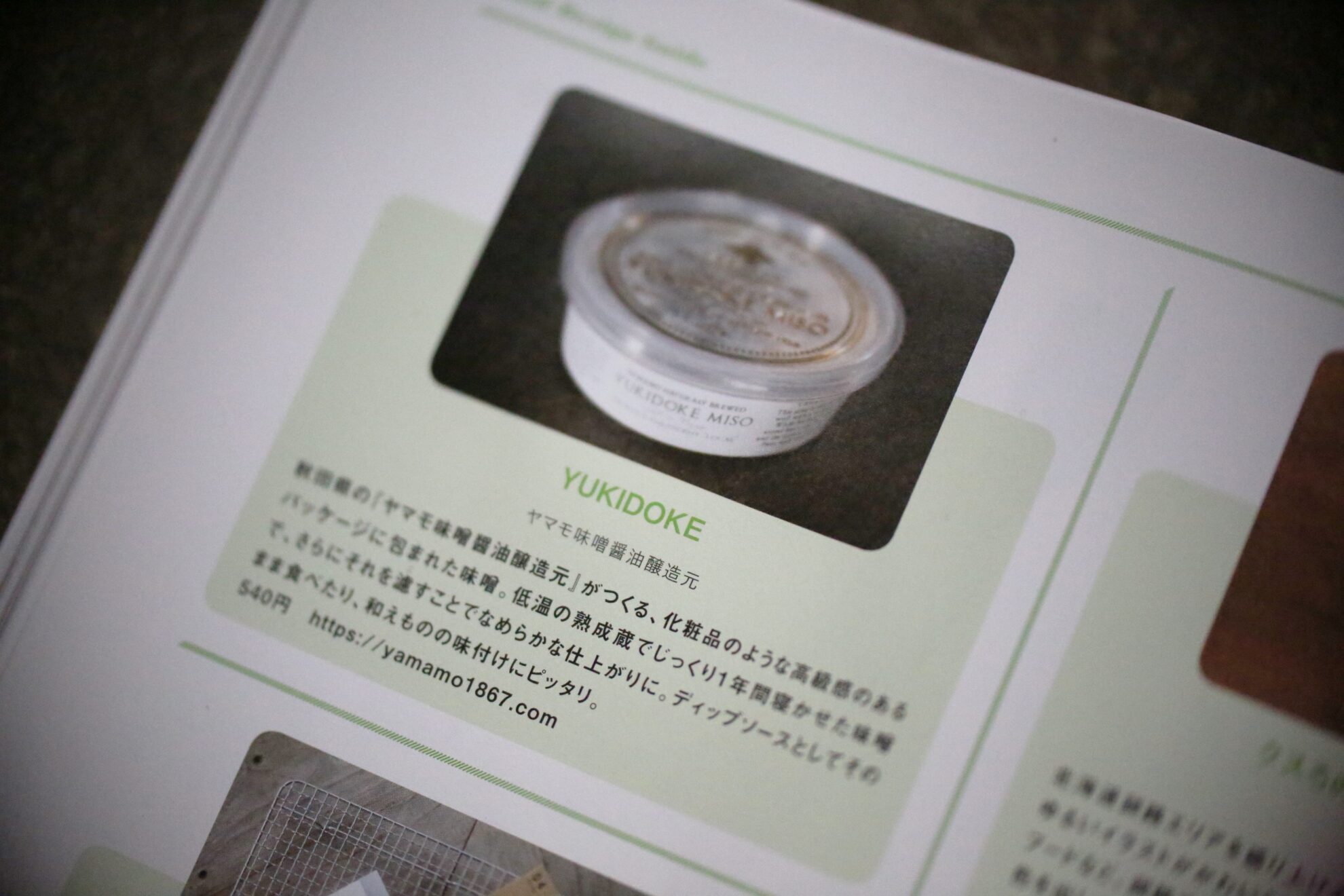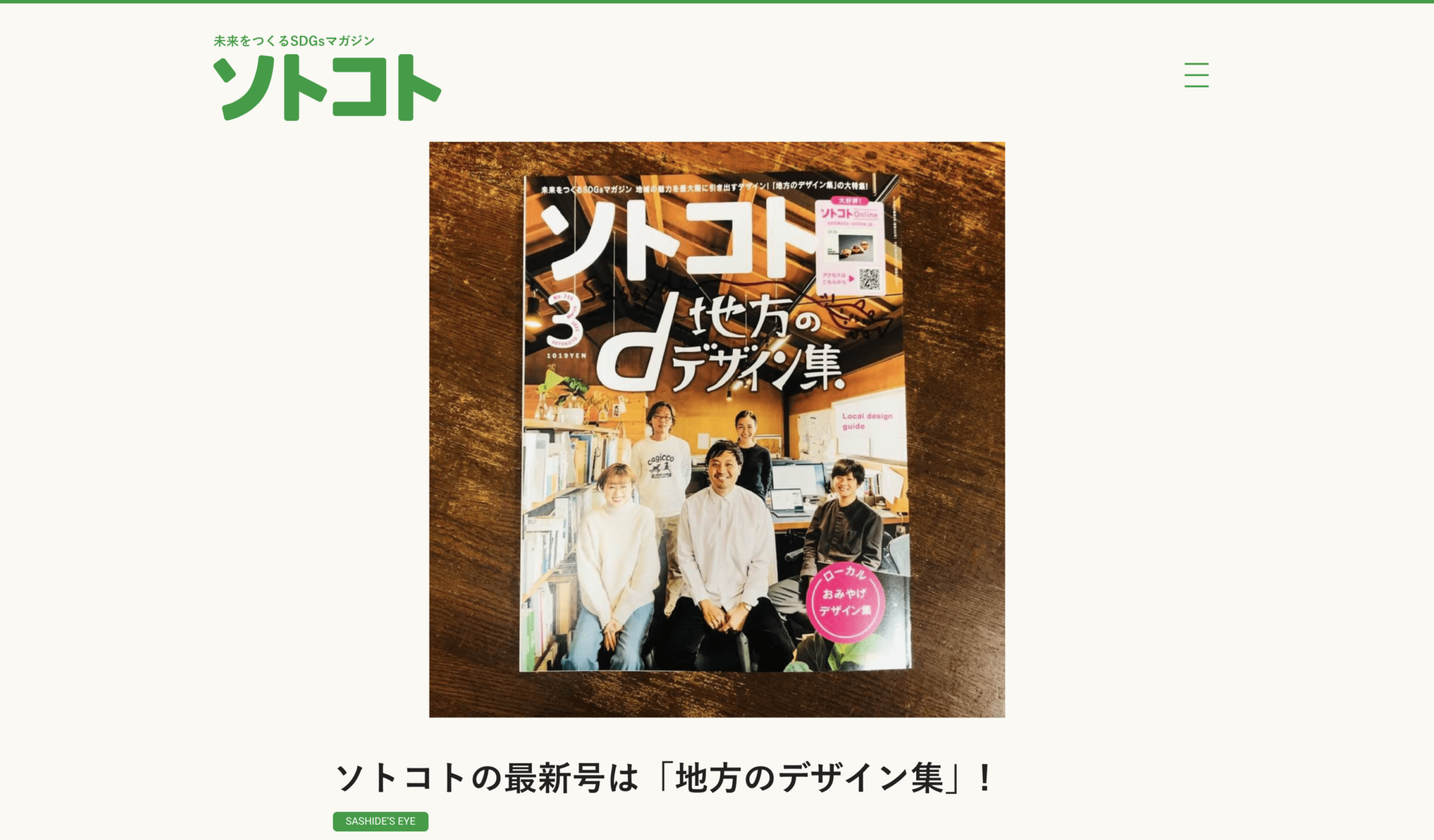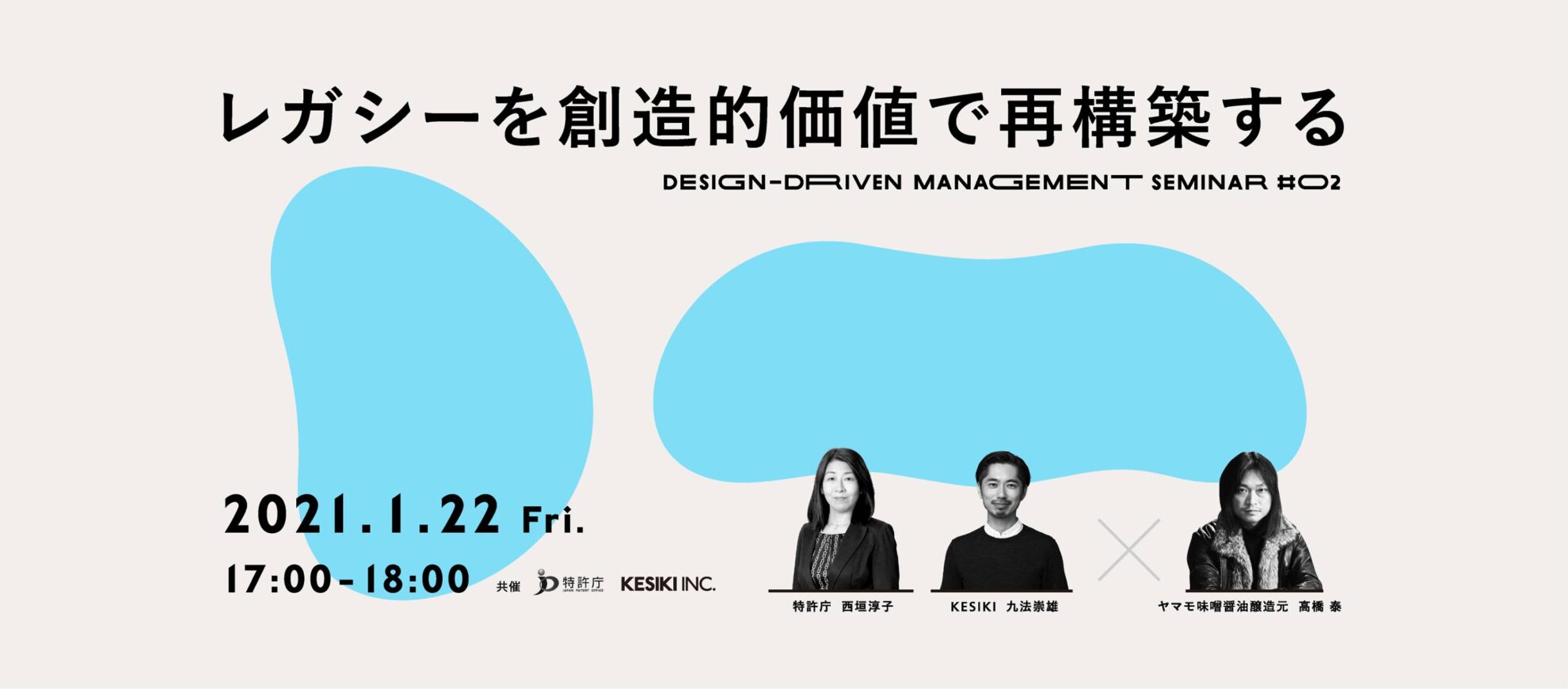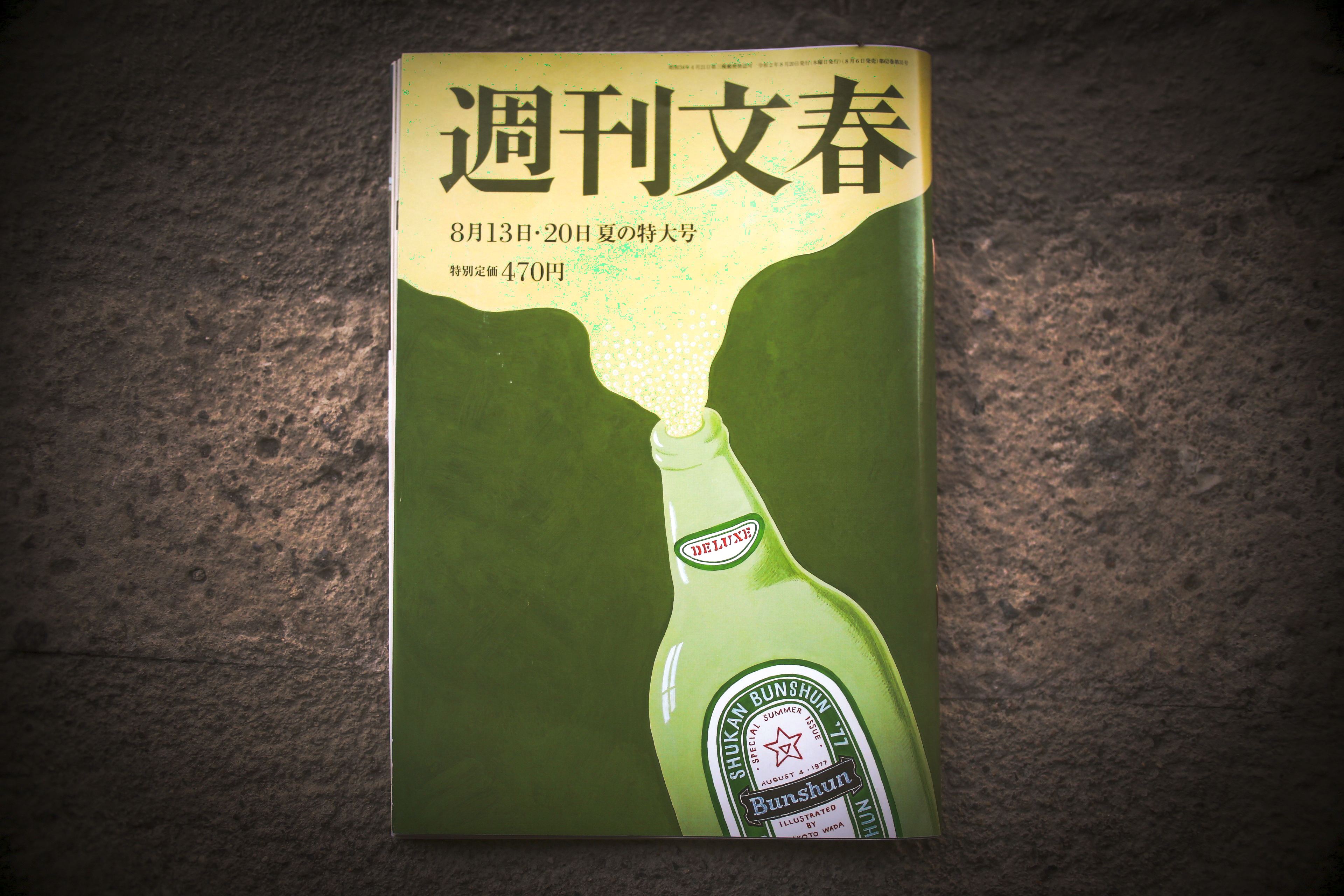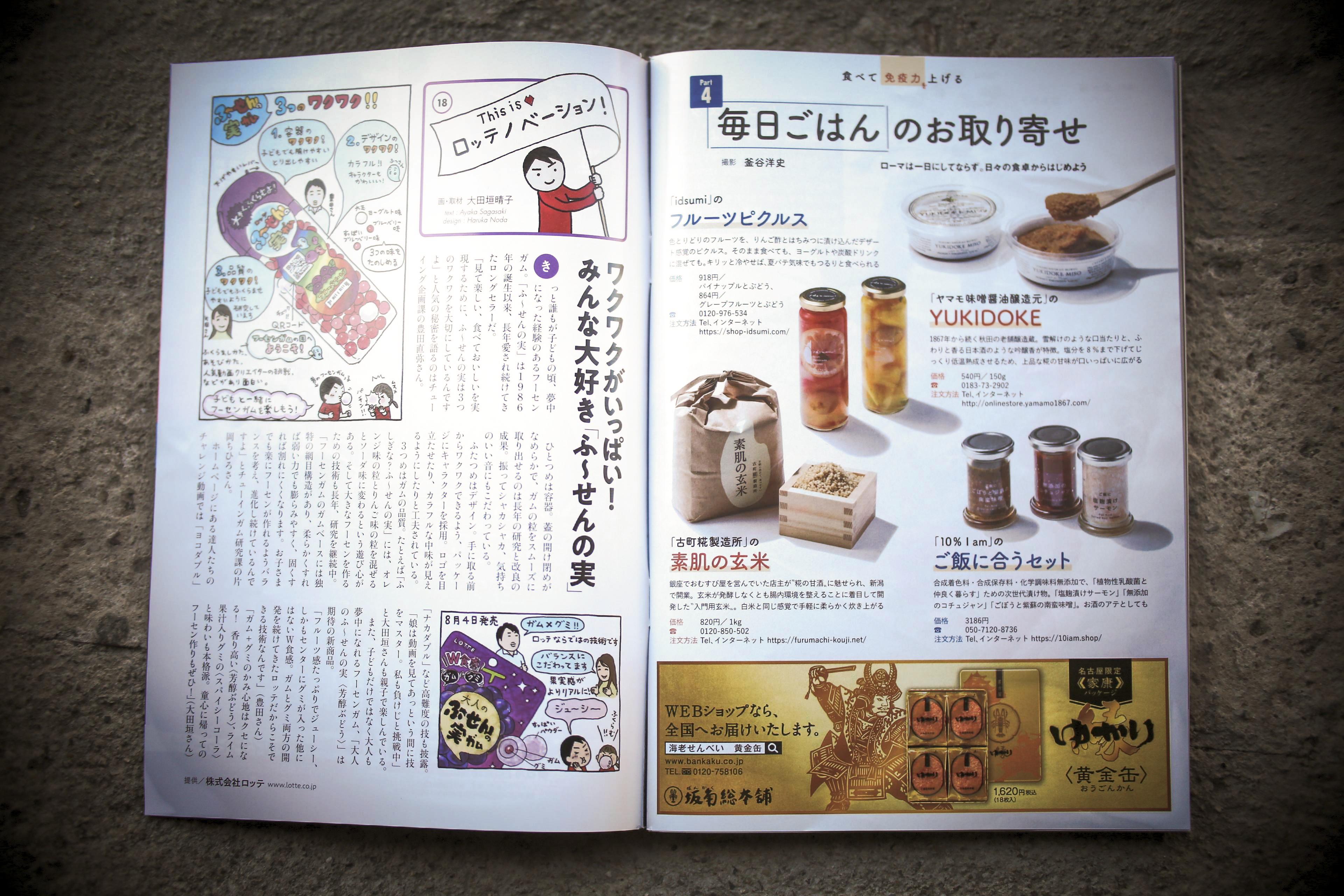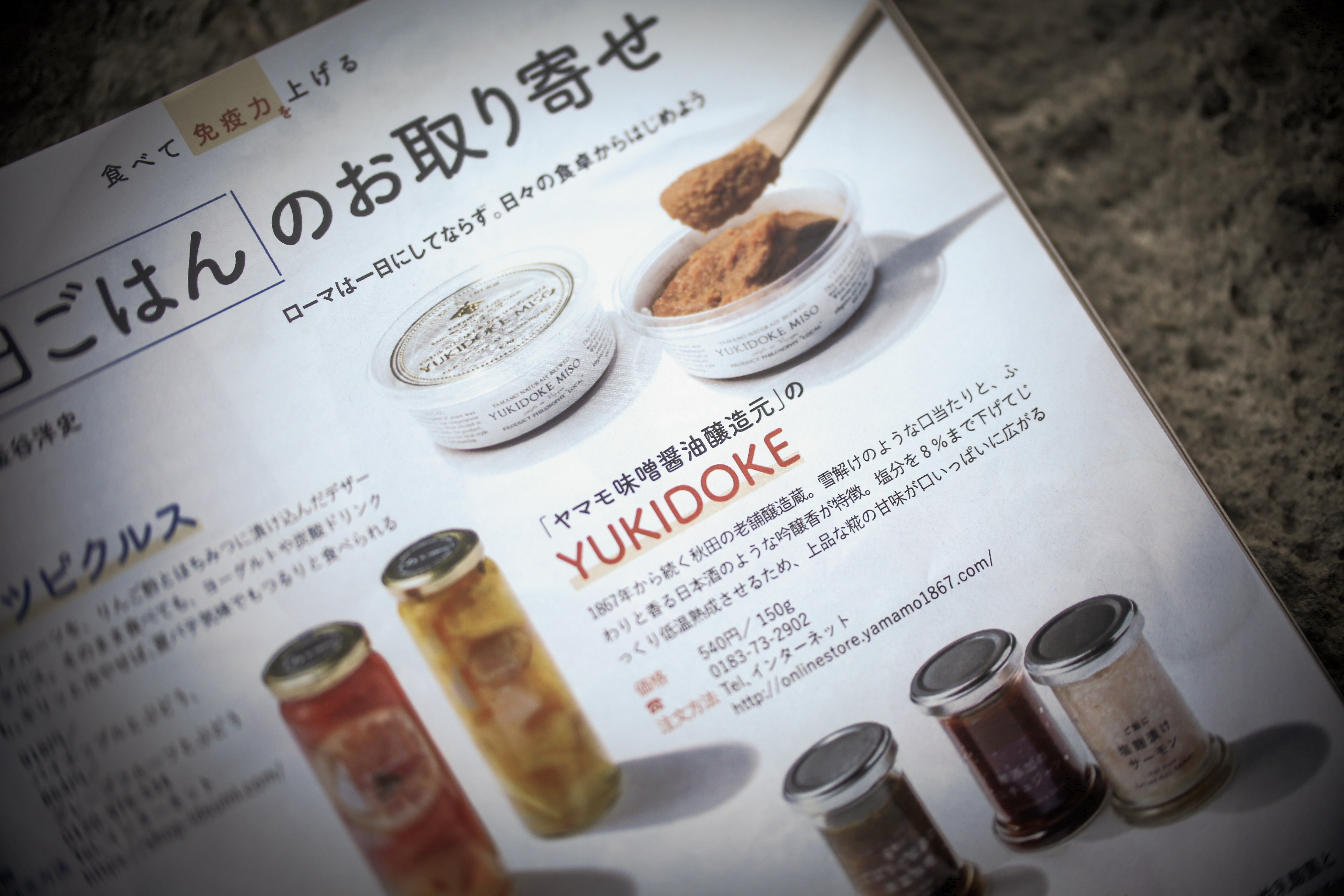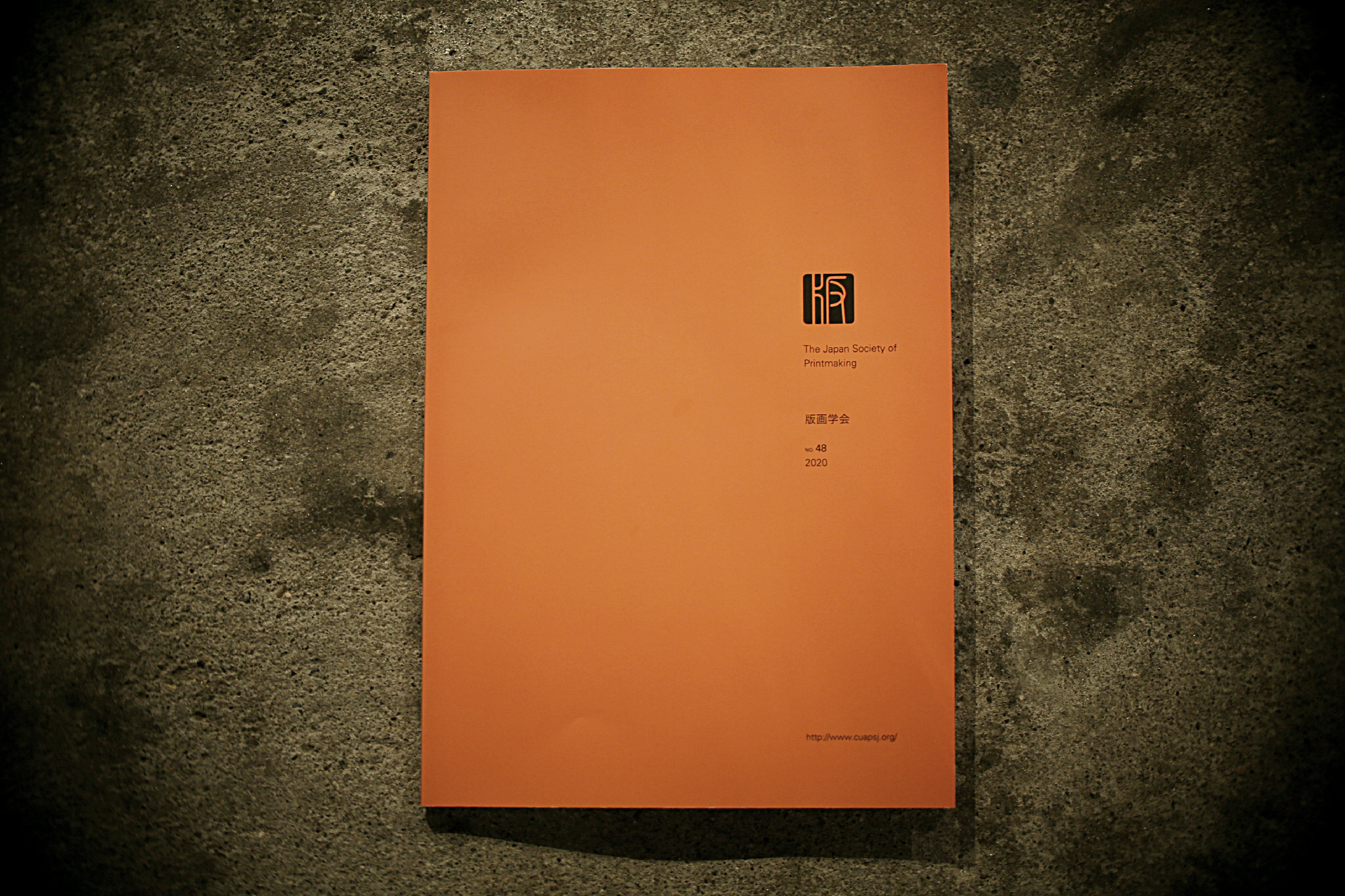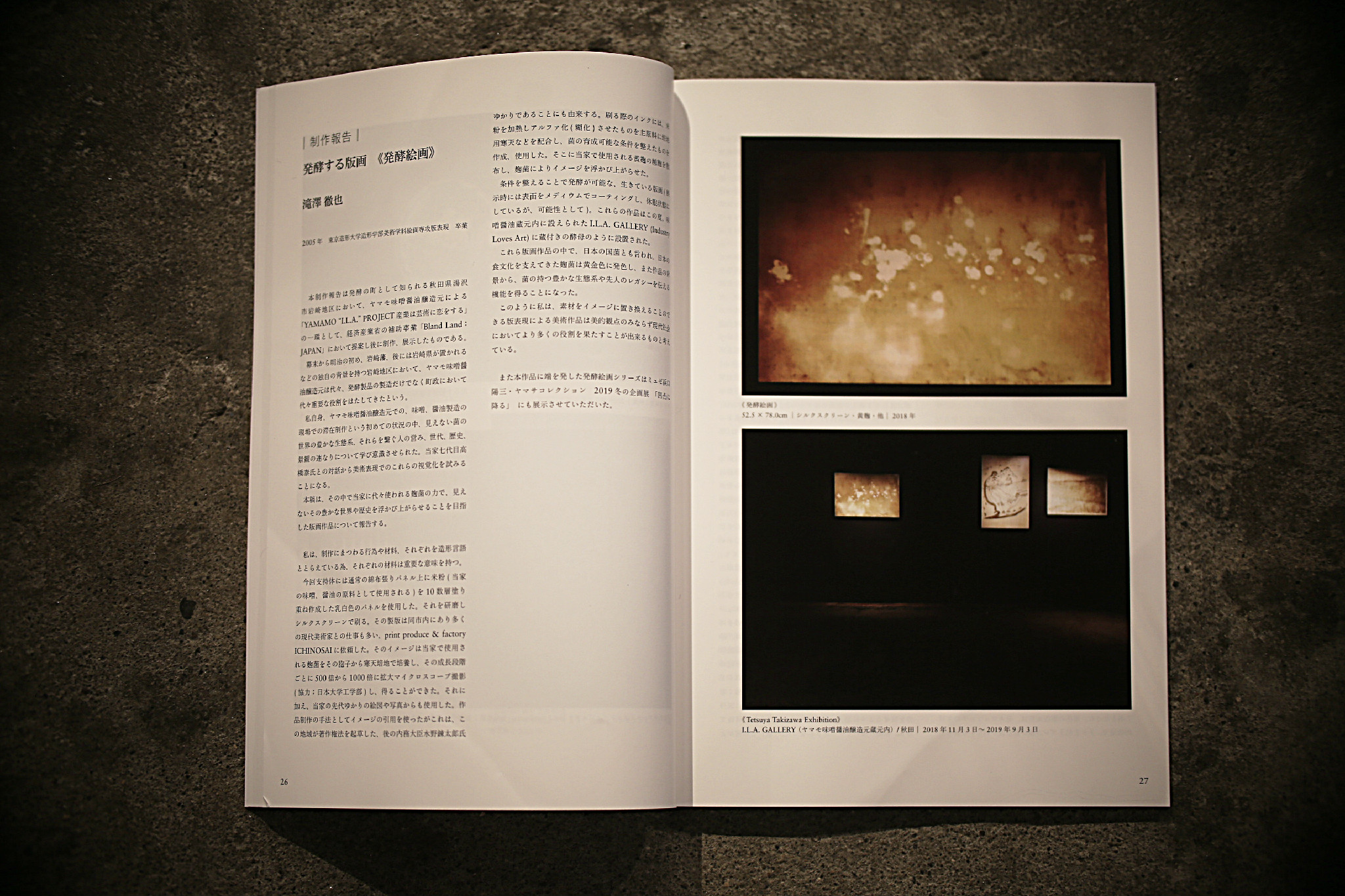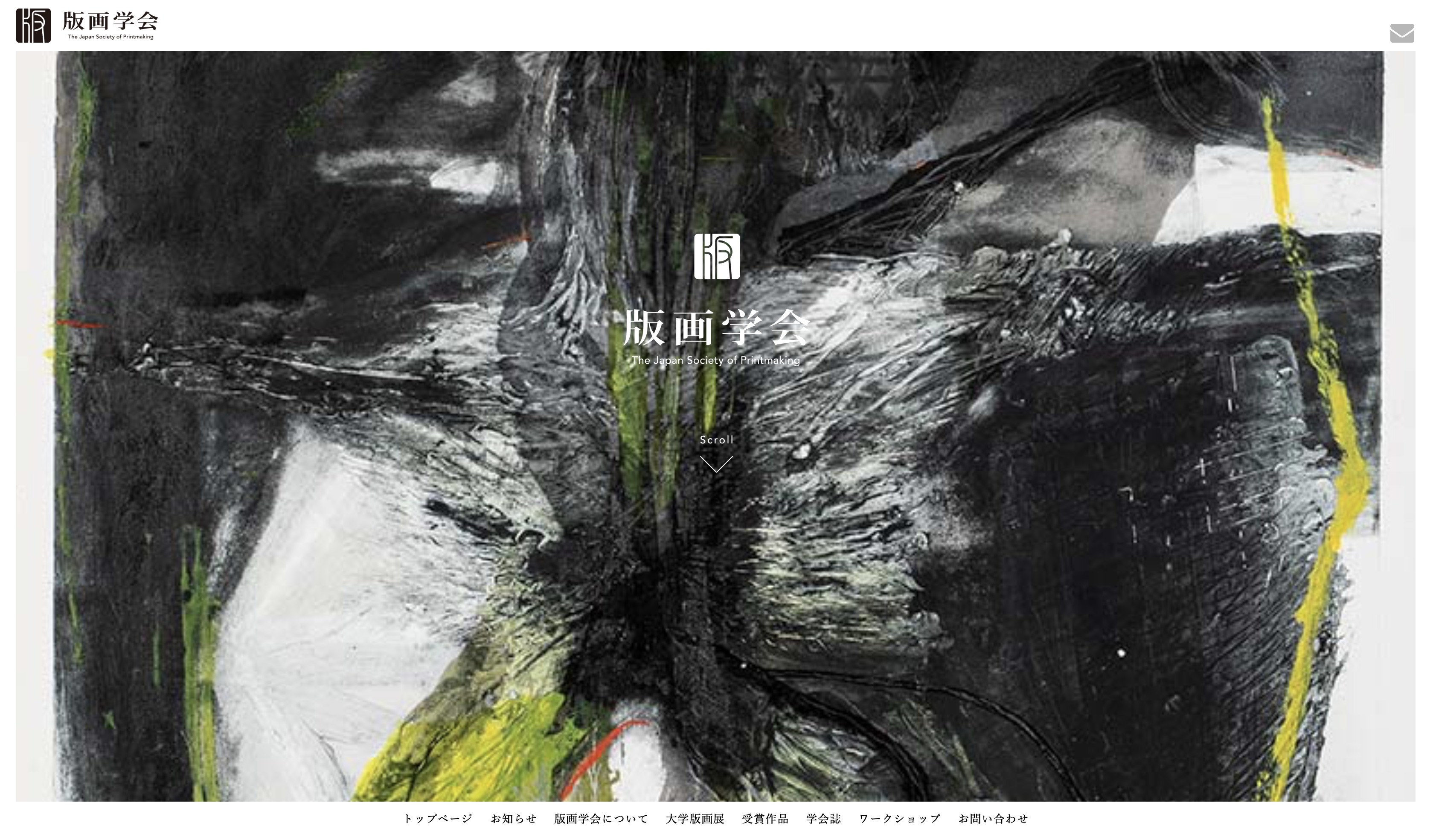先日のオンライン対談の内容をテキストでまとめていただきました。家業を継いでからの学びや現在に至るまでの考え方、社会課題や自己との向き合い方についてお話しています。私は会社の取り組みや業界の未来を考えるうちに、つくりたい未来や社会像を見出し、その方向の中で個人のやるべきことを一致させ、物事を進めていくようになりました。そのようになるまで多くの時間を費やし、個人、会社、地域、社会のレイヤーで葛藤を続けてきました。
日本が持つ強みは、長い歴史に基づいた重厚な文化による積層です。それを生かすには古い産業構造や文化事業を現代に最適させるべく、変化していくことです。ここに多くの勇気と決断が必要となりますが、成し遂げられた際には、世界の中で輝きを放ち、人間らしい生態系の一つを提案できるものになると考えています。
世界の中での日本の伝統産業の役割から、今年の記録的な大雪もあり、雪国の自立を促す世界の社会変革まで、筋書きのない話の内容は多岐に渡りました。現代が抱える問題や社会課題について議論できたことは、非常に幸福な時間でした。スタッフの皆様、ありがとうございました。
.
Report That DESIGN-DRIVEN MANAGEMENT SEMINAR #02
I had you summarize the contents of the online dialogue the other day in text. He talks about learning from inheriting the family business, thinking up to the present, social issues and how to deal with oneself. As I thought about the company’s efforts and the future of the industry, I found the future and social image I wanted to create, and in that direction I began to match what individuals should do and proceed with things. We spent a lot of time before that happened and continued to struggle at the individual, company, community and social layers.
Japan’s strength is the accumulation of a profound culture based on a long history. To make the most of it, we need to make changes to optimize the old industrial structure and cultural business to the present day. It takes a lot of courage and decision, but when it is achieved, we believe that it will shine in the world and propose one of the human-like ecosystems.
From the role of Japanese traditional industries in the world to the record heavy snowfall of this year and the social change of the world that promotes the independence of snowy countries, the content of the story was wide-ranging. It was a very happy time to be able to discuss the problems and social issues facing us today. Thank you to all the staff.
.
DESIGN-DRIVEN MANAGEMENT SEMINAR #02的報告
我讓您以文字形式總結了在線對話的內容。 他談到從家族企業的繼承中學習,直到目前為止的思考方式,社會問題以及如何與自己打交道。 當我考慮公司的努力和行業的未來時,我發現了我想要創造的未來和社會形象,並且在這個方向上,我開始適應個人應該做什麼並繼續做事。 在此之前,我們花了很多時間,並在個人,公司,社區和社會各階層繼續奮鬥。
日本的力量是基於悠久歷史積累的深厚文化。 要充分利用它,我們需要進行更改以優化現有的舊產業結構和文化業務。 這需要很多勇氣和決策,但是一旦實現,我們相信它將在世界上大放異彩,並提出一個類似於人類的生態系統。
從日本傳統工業在世界上的作用到今年創紀錄的大雪以及促進下雪國家獨立的世界社會變化,故事內容廣泛。 能夠討論今天我們面臨的問題和社會問題是一個非常快樂的時刻。 謝謝全體員工。
.
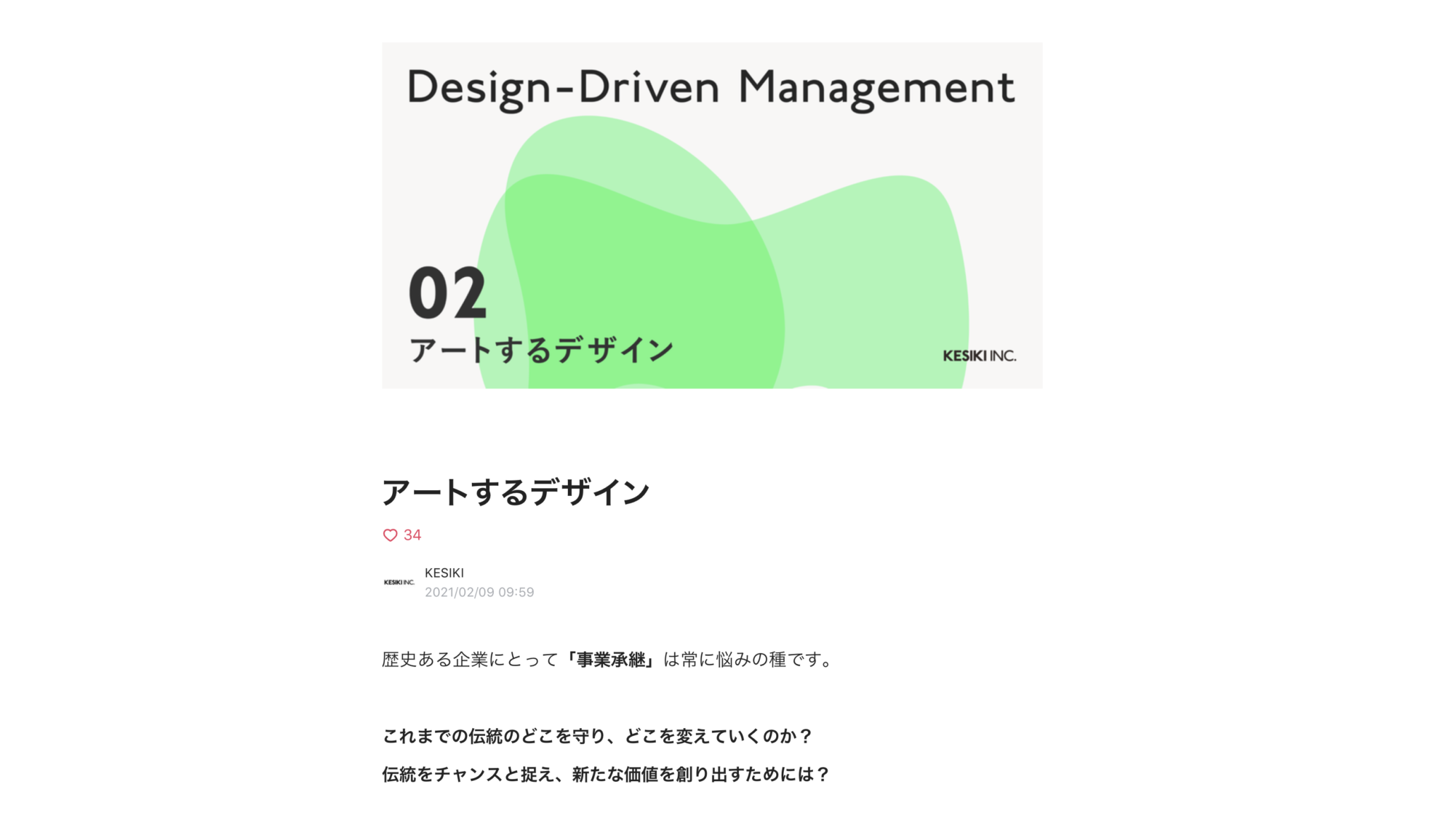
.
アートするデザイン
歴史ある企業にとって「事業承継」は常に悩みの種です。
これまでの伝統のどこを守り、どこを変えていくのか?
伝統をチャンスと捉え、新たな価値を創り出すためには?
KESIKIと経済産業省特許庁が共催する「DESIGN-DRIVEN MANAGEMENT SEMINAR」の第二回では、秋田県で1867年から続くヤマモ味噌醤油醸造元の髙橋 泰さんをゲストにお迎えし、「事業継承」にも深く関連する「企業の人格や文化の形成」についてお伺いしました。
髙橋さんは同社の7代目として、自らウェブサイトやパッケージデザインを手掛けリブランディングを行うほか、様々なアーティストや建築家、研究者、シェフたちとともにコラボレーションしながら、国内外への発信を続けてきました。
また、10年に渡る試験醸造から果実香と旨味を醸成するViamver酵母(特許出願中)を発見し、味噌醤油製品のみならずカフェメニューや肉魚の加工品、ワインや飲料に応用し、新たな発酵の世界を追求しています。
長い歴史を背負いながら新しい価値を再構築し、次々と結果を残している髙橋さんですが、実は若い頃はずっと家業のことを「ダサくて継ぎたくない」「まるで呪いだ」とまで思っていたそうです。そこから、十数年。歴史や伝統の捉え方、個人のクリエイティビティの活かし方など、ご自身があがき続けた経験談や世界を歩いて得た様々な知見をもとにお話をしてくださいました。
.
Design to art
“Business succession” has always been a source of concern for historic companies.
Where will the tradition be preserved and what will be changed?
How to take tradition as an opportunity and create new value?
In the second “DESIGN-DRIVEN MANAGEMENT SEMINAR” co-sponsored by KESIKI and the Japan Patent Office of the Ministry of Economy, Trade and Industry, Mr. Yasushi Takahashi, the brewer of Yamamo Miso and Soy Sauce Brewing Company, which has been in Akita Prefecture since 1867, was invited as a guest to “succeed business” We asked about “formation of corporate personality and culture” which is deeply related to.
As the 7th generation of the company, Mr. Takahashi has been working on website and package design and rebranding himself, and has continued to disseminate information both domestically and internationally while collaborating with various artists, architects, researchers and chefs. It was.
In addition, we discovered Viamver yeast (patent pending) that brews fruit aroma and umami from 10 years of trial brewing, and applied it not only to miso soy sauce products but also to cafe menus, processed meat and fish products, wine and beverages, and new We are pursuing the world of fermentation.
Mr. Takahashi, who has a long history and is rebuilding new values and producing results one after another, actually, when he was young, he always thought that he didn’t want to continue his family business, “it’s like a curse.” It seems to be. It’s been over ten years since then. He talked about his experiences, such as how to grasp history and traditions, how to utilize his personal creativity, and various knowledge gained by walking around the world.
.
設計藝術
“業務繼承”一直是歷史悠久的公司所關注的問題。
傳統將保留在哪裡,什麼將會改變?
如何以傳統為契機,創造新價值?
在由KESIKI和經濟產業省的日本專利局共同贊助的第二次“設計驅動管理研討會”中,Yamamo味噌醬油的釀造商高橋康史先生自秋田縣以來一直在1867年,應邀作為客人“繼承企業”,我們詢問了與之密切相關的“企業人格和文化的形成”。
作為公司的第七代人,高橋先生一直致力於網站和包裝設計以及自己的品牌重塑,並在與各種藝術家,建築師,研究人員和廚師合作的同時,繼續在國內外傳播信息。
此外,我們還發現了Viamver酵母(正在申請專利),該酵母經過10年的嘗試釀造可釀造水果香氣和鮮味,不僅將其應用於味so醬油產品,而且還應用於咖啡館菜單,加工的肉和魚產品,葡萄酒和飲料,和新的我們追求發酵的世界。
高橋先生歷史悠久,正在重建新的價值觀並接連產生成果,實際上,在他年輕的時候,他一直以為自己不想繼續他的家族生意,“這就像一個詛咒”。似乎是。從那以後已經十多年了。他談到了自己的經歷,例如如何把握歷史和傳統,如何利用個人創造力以及環遊世界獲得的各種知識。
.
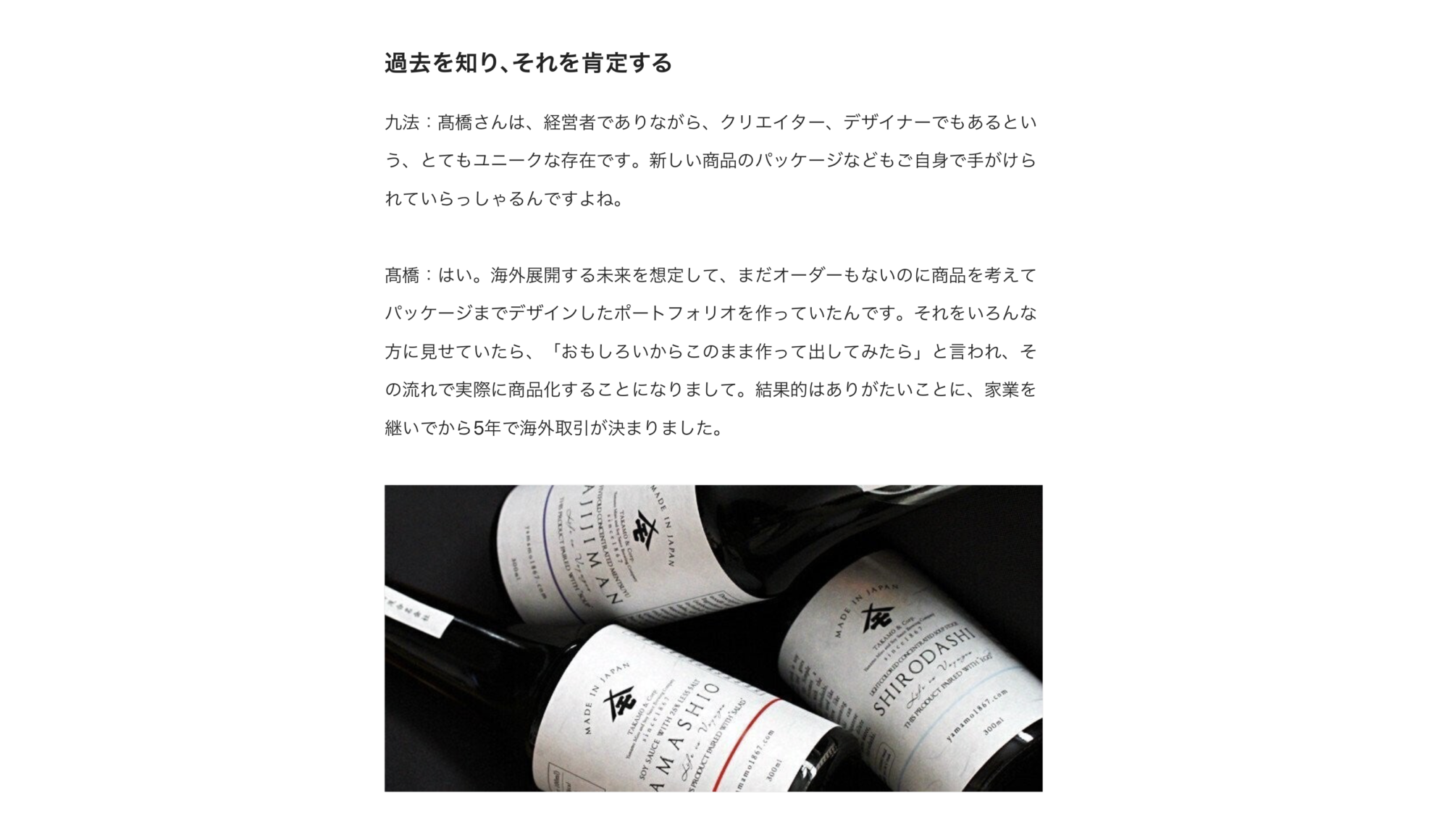
.
過去を知り、それを肯定する
九法:髙橋さんは、経営者でありながら、クリエイター、デザイナーでもあるという、とてもユニークな存在です。新しい商品のパッケージなどもご自身で手がけられていらっしゃるんですよね。
髙橋:はい。海外展開する未来を想定して、まだオーダーもないのに商品を考えてパッケージまでデザインしたポートフォリオを作っていたんです。それをいろんな方に見せていたら、「おもしろいからこのまま作って出してみたら」と言われ、その流れで実際に商品化することになりまして。結果的はありがたいことに、家業を継いでから5年で海外取引が決まりました。
九法:展開が早い(笑)。以前にお話を聞いたとき、髙橋さんは自社に限らず日本の地域の「レガシー産業」に大きな可能性を感じているとおっしゃっていました。そこに至ったのは、どういったきっかけだったんでしょうか。
髙橋:そうですね。やはり海外に出たときに、一代で成し遂げられない価値を最大化する方が、世界の中で競争力を持つという結論に至りました。伝統企業の多いというのは日本ならではの強みだと思うので、もっと地域に受け継がれるレガシーを活かしていくことが国として大切なのではと強く思うようになりました。
西垣:歴史を遡る方に髙橋さんを向かわせたのは、なんだったのでしょうか。
髙橋:様々な分野のブランドを見ていても、過去を否定することによって今を確立するという手法はよくあると思います。でも、続いてきた歴史は、時代背景や感情、愛情に基づく意思決定がその都度なされていて、それらを現代の価値軸で推し量ってしまうことに違和感を覚えるようになりました。そこで、やるべきことは、過去を知りそれを「肯定する」ことだと思ったんです。
西垣:髙橋さん自身は、もともとご自分の家業に対してどう見られていたんですか。
髙橋:最初は継ぎたくなかったし、ものすごくダサいと思っていました。ある種の呪いのようなもので、将来のことを考えると憂鬱な気分になっていました。私のみならず、家業のある方はみんなそういう部分があるのではないでしょうか。
.
Know the past and affirm it
Kunori: Mr. Takahashi is a very unique person who is a creator and a designer as well as a manager. You are also working on the packaging of new products yourself.
Takahashi: Yes. Assuming the future of overseas expansion, I was creating a portfolio in which I thought about products and designed packages even though I had no orders yet. When I was showing it to various people, I was told, “It’s interesting, so I’d like to make it as it is,” and I decided to actually commercialize it in that flow. As a result, thankfully, overseas transactions were decided five years after taking over the family business.
Kunori: Deployment is quick (laughs). When I heard about it before, Mr. Takahashi said that he feels great potential not only in his own company but also in the “legacy industry” in Japan. How did you get there?
Takahashi: That’s right. After all, when I went abroad, I came to the conclusion that maximizing the value that cannot be achieved by one generation is more competitive in the world. I think that the fact that there are many traditional companies is a strength unique to Japan, so I strongly believe that it is important for the country to make more use of the legacy that is passed down to the region.
Nishigaki: What made Mr. Takahashi go back in history?
Takahashi: Even if you look at brands in various fields, I think there is often a method of establishing the present by denying the past. However, in the history that has continued, it has become uncomfortable to make decisions based on the historical background, emotions, and affection each time, and to guess them on the modern value axis. So I thought that what I had to do was to know the past and “affirm” it.
Nishigaki: How did Mr. Takahashi originally view his family business?
Takahashi: At first, I didn’t want to continue, and I thought it was terribly dull. It was kind of a curse, and I felt depressed when I thought about the future. Not only me, but everyone who has a family business may have such a part.
.
了解過去並確認過去
九法:高橋先生是一個非常獨特的人,既是創造者,設計師又是經理。您還自己在包裝新產品。
高橋:是的。假設未來會進行海外擴張,我正在創建一個投資組合,即使我還沒有訂單,我仍會在其中考慮產品和設計包裝。當我向所有人展示它時,我被告知:“這很有趣,所以我想按原樣製作它”,因此我決定將它實際商業化。結果,幸運的是,海外交易是在接管家族企業五年後決定的。
九法:部署很快(笑)。高橋先生曾經聽說過,他不僅在自己的公司而且在日本的“傳統產業”中都感受到了巨大的潛力。你是怎麼到達那裡的?
高橋:對。畢竟,當我出國時,我得出的結論是,最大化一代人無法實現的價值在世界上更具競爭力。我認為,有許多傳統公司的事實是日本獨有的實力,因此我堅信,對日本來說,充分利用傳承給該地區的遺產至關重要。
西垣:是什麼使高橋先生重回曆史?
高橋:即使您關注各個領域的品牌,我認為通常也有一種通過否定過去來建立當下的方法。但是,在持續的歷史中,每次根據歷史背景,情感和情感做出決策,並在現代價值軸上進行猜測變得不舒服。因此,我認為我要做的就是了解過去並“肯定”過去。
西垣:高橋先生最初是如何看待他的家族企業的?
高橋:起初,我不想繼續,而且我認為那太沉悶了。這是一種詛咒,當我想到未來時,我感到沮喪。不僅是我,而且每個擁有家族企業的人都可能扮演這樣的角色。
.
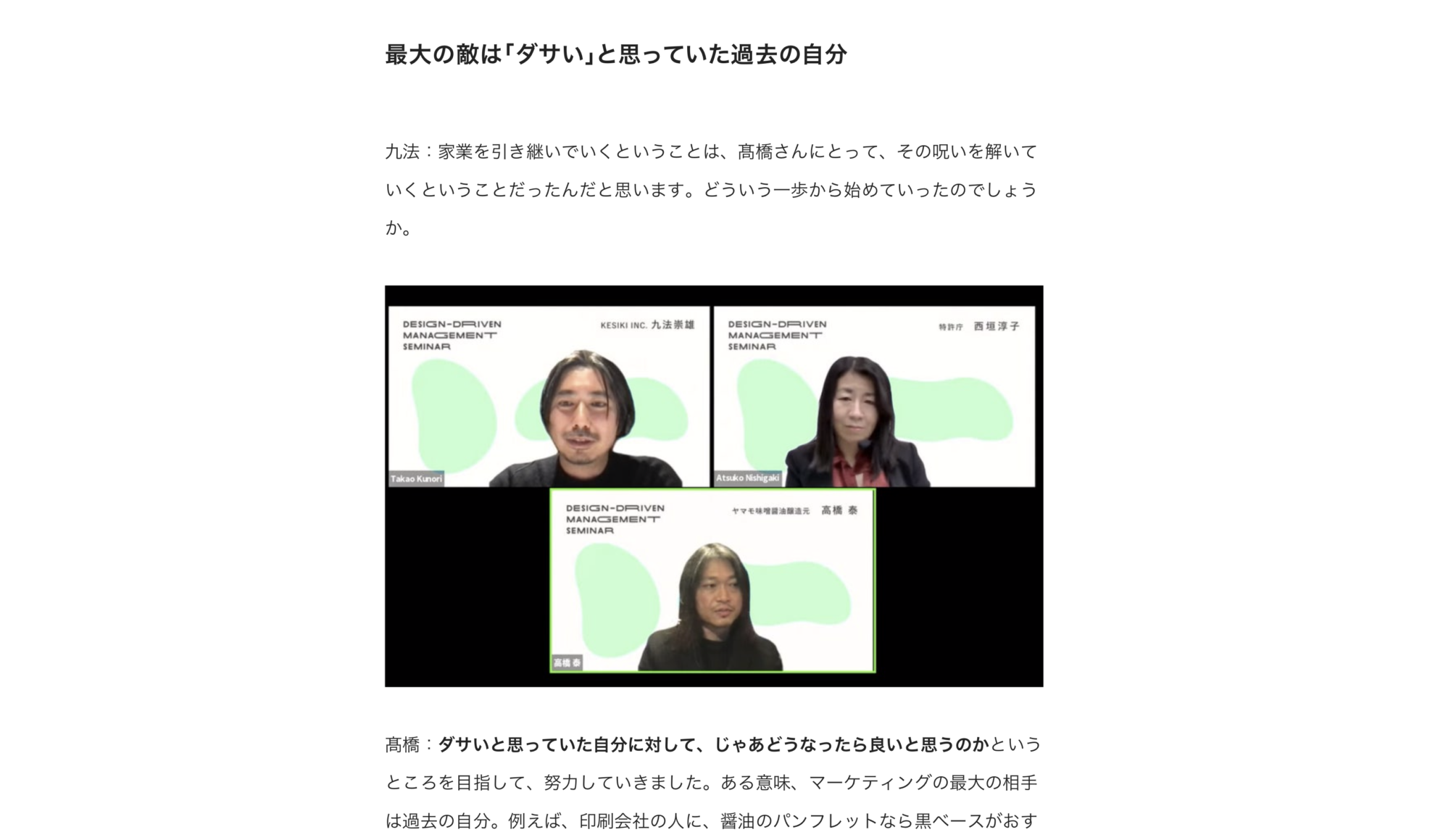
.
最大の敵は「ダサい」と思っていた過去の自分
九法:家業を引き継いでいくということは、髙橋さんにとって、その呪いを解いていくということだったんだと思います。どういう一歩から始めていったのでしょうか。
髙橋:ダサいと思っていた自分に対して、じゃあどうなったら良いと思うのかというところを目指して、努力していきました。ある意味、マーケティングの最大の相手は過去の自分。例えば、印刷会社の人に、醤油のパンフレットなら黒ベースがおすすめだと言われても、その通例に流されずに抗ったり、そういう小さなことから積み重ねていきました。
西垣:髙橋さんの振る舞いを、既存の社員の方々はどう思われていたんでしょうか。
髙橋:最初は、髪も長いし髭もあるし、珍しいもののように見られていたと思います(笑)。でも、そういうことは全然気にならなかった。むしろ、どうやって産業の通例のようなものに流されず、自分の理想を保ち続けられるかの戦いでした。
そのためにまず自室をつくって好きな家具などを置き、自分が立ち戻れる場所をつくりましたね。そこから、少しずつショップにその家具を置いてみたりして、自分がやりたいスタイルをじわじわ侵食させていきました。でも本心をわかってくれる人が社内に根づくまでには、10年ほどかかりました。
九法:孤独な戦いを10年も…。普通のメンタルだと逃げ出したくもなりそうですが、どうやって10年間を乗り越えたんですか。
髙橋:そうですね、一番身近な両親ですら説得できなかったので、ずっと自分を信じていました。そのうち、本音で話し合える人が少しずつ現れて、今ではちゃんとチームに信頼関係ができています。当社では蔵にカフェやギャラリーをつくり、世界で活躍するアーティストや料理人とコラボレーションしてていますが、彼らにも愛情を持て適正にダメ出しができて、だからこそ信頼関係ができると思っています。
西垣:昔から勤めていて、このままがいいんだという社員にはどう語りかけていったんですか。
髙橋:私が直接ビジョンを語ることは避けています。たとえば、若手社員たちが、新商品を使ったシェフの料理を社員みんなで食べる機会を企画してくれたりというかたちで、新しい取り組みも楽しそうだなと思ってもらえるまで待つ、という方法をとっています。
.
My biggest enemy was my past self, which I thought was “uncool”
Kunori: I think that taking over the family business meant breaking the curse for Mr. Takahashi. What step did you start with?
Takahashi: I made an effort to find out what I should do for myself, who I thought was awkward. In a sense, the biggest marketing partner is the past self. For example, even if a printing company told me that a black base is recommended for soy sauce pamphlets, I tried to resist it without being swept away by the custom, and I piled up from such small things.
Nishigaki: What did the existing employees think of Mr. Takahashi’s behavior?
Takahashi: At first, I had long hair and a beard, and I think it looked like something unusual (laughs). But I didn’t care about that at all. Rather, it was a battle of how to maintain one’s ideals without being swept away by the usual industry.
To that end, I first created my own room, placed my favorite furniture, and created a place where I could return. From there, I gradually put the furniture in the shop and gradually eroded the style I wanted to do. However, it took about 10 years for people who understand their true intentions to take root in the company.
Kunori: A lonely battle for 10 years … If you’re a normal mental person, you might want to run away, but how did you get over 10 years?
Takahashi: Well, even my closest parents couldn’t persuade me, so I always believed in myself. Eventually, people who could really talk with each other gradually appeared, and now we have a good relationship of trust with the team. We have created cafes and galleries in the warehouse and collaborate with artists and chefs who are active in the world, and I think that we can have a relationship of trust because we can also love them and properly dispose of them.
Nishigaki: How did you talk to the employees who have been working for a long time and said that they should stay as they are?
Takahashi: I avoid talking about my vision directly. For example, young employees plan an opportunity for all employees to eat chef’s dishes using new products, and wait until they think that new initiatives will be fun. ..
.
我最大的敵人是我過去的自我,我認為這很糟糕
九法:我認為接管家族企業意味著打破對高橋先生的詛咒。您從哪一步開始?
高橋:我努力尋找自己應該做的事,我認為這很尷尬。從某種意義上說,最大的營銷夥伴是過去的自己。例如,即使一家印刷公司告訴我建議在醬油小冊子中使用黑底,但我還是試圖抵制它,而又不被常規習俗所掃除,而且我積such了這麼小的東西。
西垣:現有員工對高橋先生的行為有何看法?
高橋:起初,我留著長發,留著鬍鬚,我覺得這看起來很不尋常(笑)。但是我一點也不在乎。相反,這是一場如何保持自己的理想而又不受常規行業束縛的鬥爭。
為此,我首先創建了自己的房間,放置了我最喜歡的家具,並創建了一個可以返回的地方。從那裡,我逐漸將家具放到商店裡,逐漸侵蝕了我想做的風格。但是,了解自己真正意圖紮根公司的人們花了大約10年的時間。
九法:十年孤獨的戰鬥…如果您是一個正常的心理人,您可能想逃跑,但是您是如何度過了10年的呢?
高橋:好吧,即使我最親密的父母也不能說服我,所以我一直相信自己。最終,真正可以互相交談的人逐漸出現,現在我們與團隊之間建立了良好的信任關係。我們在倉庫中創建了咖啡館和畫廊,並與活躍於世界各地的藝術家和廚師合作,我認為我們之間可以建立信任關係,因為我們也可以愛護它們並妥善處置它們。
西垣:您如何與長期工作的員工交談,並說他們應該保持原樣?
高橋:我避免直接談論自己的願景。例如,年輕員工計劃讓所有員工都有機會使用新產品來品嚐廚師的菜,然後等到他們認為新舉措會很有趣。
.

.
自分自身に深く潜り込む
九法:髙橋さんは経営者になられてから、リブランディングに始まり、カフェやギャラリーをつくったり、海外展開も始められています。次々に新しいことを手掛けられていますが、自身のクリエイティビティの源泉ってどこにあるんでしょうか。
髙橋:社会を変える兆しや、新しいトレンドをウォッチするということが好きなんです。そういうものに出会った時に、なぜその時代のその土地でしか起こり得なかったのか、という文脈を捉えようとしています。
特に街づくりをやっている人たちはとても興味深いです。そこに住む多種多様な人たちを包容しながら、ライフスタイルというカルチャーを作り出しているわけですよね。NYでブルックリンの街を作っている人たちに出会って、そこから紹介をしていただいたりして、定期的に国内外で地域を再構築している方々に会っています。
西垣:街づくりにもかなりご関心があるんですね。それは、地域企業として自社存続のためなのか、それとも地域自体をつくっていきたいと考えられているのか、どちらなんですか。
髙橋:どちらもあります。たとえば、いま東北は豪雪に大変悩まされていますが、この課題を解決するためには、北欧の地域づくりや文化から学ぶ必要があると考えています。北欧では、雪でいろんなものがストップして生産性が低くなってしまうからこそ、デザイン・クリエイティブ産業が盛んだったり、コンセプチュアルな地域づくりをしています。中央政府の支援を待つのではなく、東北という地域をあげて海外の地域と組んで課題解決ができるのではと思っています。
九法:髙橋さんは、世界中の街や幅広いカルチャーなど、とても物知りなのでたくさん本を読んでいそうだなと思っていたのですが、実際はあまり本は読まないとおっしゃっていて驚きました。普段どういうところで着想を得て、自分の中で言語化していっているんですか。
髙橋:音楽や漫画などのトレンドは好きで見ていますが、本はほとんど読まないですね。たとえば、ある音楽トレンドに対して、なぜいま若者がその音楽を良いと思うのかということを主観で深く考え、自分が知っている別のケースと結びつけて検証して、またそれをストックしていくんです。私よりも、その主観の検証をものすごくたくさんストックしている人に出会ったことがありますが、外部情報の受け売りではなく、ものごとをすべて主観で話しているんですよね。
九法:なるほど。音楽好きやカルチャー好きの経営者はいますが、そこから得た知見をビジネスに活かしている人は少ない。髙橋さんはクリエイティビティやカルチャーが、伝統産業にとって、どのように有効だと捉えていらっしゃいますか。
髙橋:人間が想像したり夢想したりすることは、新しいものを生み出す力の源泉だと思っています。これまでは、多くのリソースが集まる都市や大企業などからイノベーションが起こっていましたが、今はテクノロジーのおかげでもっと最小単位で起こすことができるようになりました。そうすると、個人の夢想や情熱がより重要になってきます。
そのためには、まず自分自身を知ることです。客観領域からは夢想や情熱は生まれない、むしろそれらを阻んでしまうと思っています。誰かと比べて「君は足が遅い」と言われたら、走ろうとしなくなってしまうわけです。自分自身に深く潜り込むという独創的な領域を追求した結果、他者の共感や共創を生み出せると思っています。
.
Dive deep into myself
Kunori: After becoming a manager, Mr. Takahashi started rebranding, creating cafes and galleries, and expanding overseas. You are working on new things one after another, but where is the source of your creativity?
Takahashi: I like watching signs of social change and new trends. When I come across such a thing, I try to capture the context of why it could only happen in that land of that era. Especially the people who are doing town planning are very interesting. You are creating a culture of lifestyle while embracing the wide variety of people who live there. I meet people who are building the city of Brooklyn in NY, and I get introduced from there, and I regularly meet people who are rebuilding the area at home and abroad.
Nishigaki: You’re also very interested in urban development. Is it for the survival of the company as a local company, or is it the desire to create the region itself?
Takahashi: There are both. For example, Tohoku is currently suffering from heavy snowfall, and in order to solve this problem, I think it is necessary to learn from the regional development and culture of Northern Europe. In Scandinavia, the design and creative industries are thriving and conceptual communities are being created because various things stop due to snow and productivity drops. Instead of waiting for the support of the central government, I think we can solve the problems by working with overseas regions in the Tohoku region.
Kunori: Mr. Takahashi was very familiar with cities around the world and a wide range of cultures, so I thought he would read a lot of books, but I was surprised to hear that he didn’t read many books. Where do you usually get the idea and put it into words within yourself?
Takahashi: I like trends such as music and manga, but I rarely read books. For example, for a certain music trend, I think subjectively about why young people think that music is good, verify it in connection with another case that I know, and stock it again. is. I’ve met a person who stocks a lot more of that subjective verification than I do, but I’m talking about everything subjectively, not selling or selling external information.
Kunori: I see. There are business owners who like music and culture, but few people make use of the knowledge gained from them in their business. Mr. Takahashi, how do you see creativity and culture as effective for traditional industries?
Takahashi: I think that human imagination and dreams are the source of the power to create new things. In the past, innovation was occurring in cities and large companies with many resources, but now, thanks to technology, it can be done in smaller units. Then personal dreams and passions become more important.
To do that, you first need to know yourself. I don’t think that dreams and passions are born from the objective domain, but rather prevent them. If you are told that you are slow compared to someone else, you will not try to run. As a result of pursuing the original realm of sneaking deep into myself, I believe that I can create empathy and co-creation with others.
.
深入了解自己
九法:在擔任經理之後,高橋先生開始重塑品牌,開設咖啡館和美術館,並向海外擴展。我正在一個接一個地研究新事物,但是我的創造力在哪裡呢?
高橋:我喜歡看社會變革和新趨勢的跡象。當我遇到這樣的事情時,我試圖抓住為什麼它只能在那個時代的那片土地上發生的背景。 尤其是進行城市規劃的人們非常有趣。您正在創造一種生活方式文化,同時擁抱住在那裡的各種各樣的人。我遇到了正在建設紐約布魯克林市的人們,並從那裡得到了介紹,並且我經常會見了正在國內外重建該地區的人們。
西垣:您對城市發展也很感興趣。是為了公司作為一家本地公司的生存而存在,還是要創建自己的區域?
高橋:兩者都有。例如,東北目前正遭受大雪的困擾,為了解決這個問題,我認為有必要向北歐的區域發展和文化學習。在斯堪的納維亞半島,設計和創意產業蓬勃發展,並且創建了概念性社區,因為由於降雪和生產力下降,各種事物停止了。我認為,我們不必等待中央政府的支持,而是可以通過與東北地區的海外地區合作來解決問題。
九法:高橋先生對世界各地的城市和多種文化非常熟悉,所以我以為他會讀很多書,但是聽到他沒有讀很多書,我感到很驚訝。您通常從哪裡得到想法並將其轉化為自己的語言?
高橋:我喜歡音樂和漫畫等趨勢,但我很少讀書。例如,對於某種音樂趨勢,我主觀地思考年輕人為何認為音樂很好,然後結合我所知道的另一種情況進行驗證,然後再次進行存儲。我遇到了一個人,這個人比我擁有更多的主觀驗證,但是我在主觀地說所有事情,而不是出售或出售外部信息。
九法:我明白了。有一些喜歡音樂和文化的企業主,但是很少有人在他們的業務中利用從他們那裡獲得的知識。高橋先生,您如何看待創造力和文化對傳統產業有效?
高橋:我認為人類的想像力和夢想是創造新事物的力量之源。過去,創新是在擁有大量資源的城市和大型公司中進行的,但是現在,借助技術,可以在較小的單位中完成創新。然後,個人的夢想和激情變得更加重要。
為此,您首先需要了解自己。我認為夢想和激情不是源於客觀領域,而是阻止夢想。如果您被告知與其他人相比很慢,那麼您將不會嘗試跑步。追求潛入自己的原始境界的結果是,我相信我可以與他人建立同理心和共同創造。
.
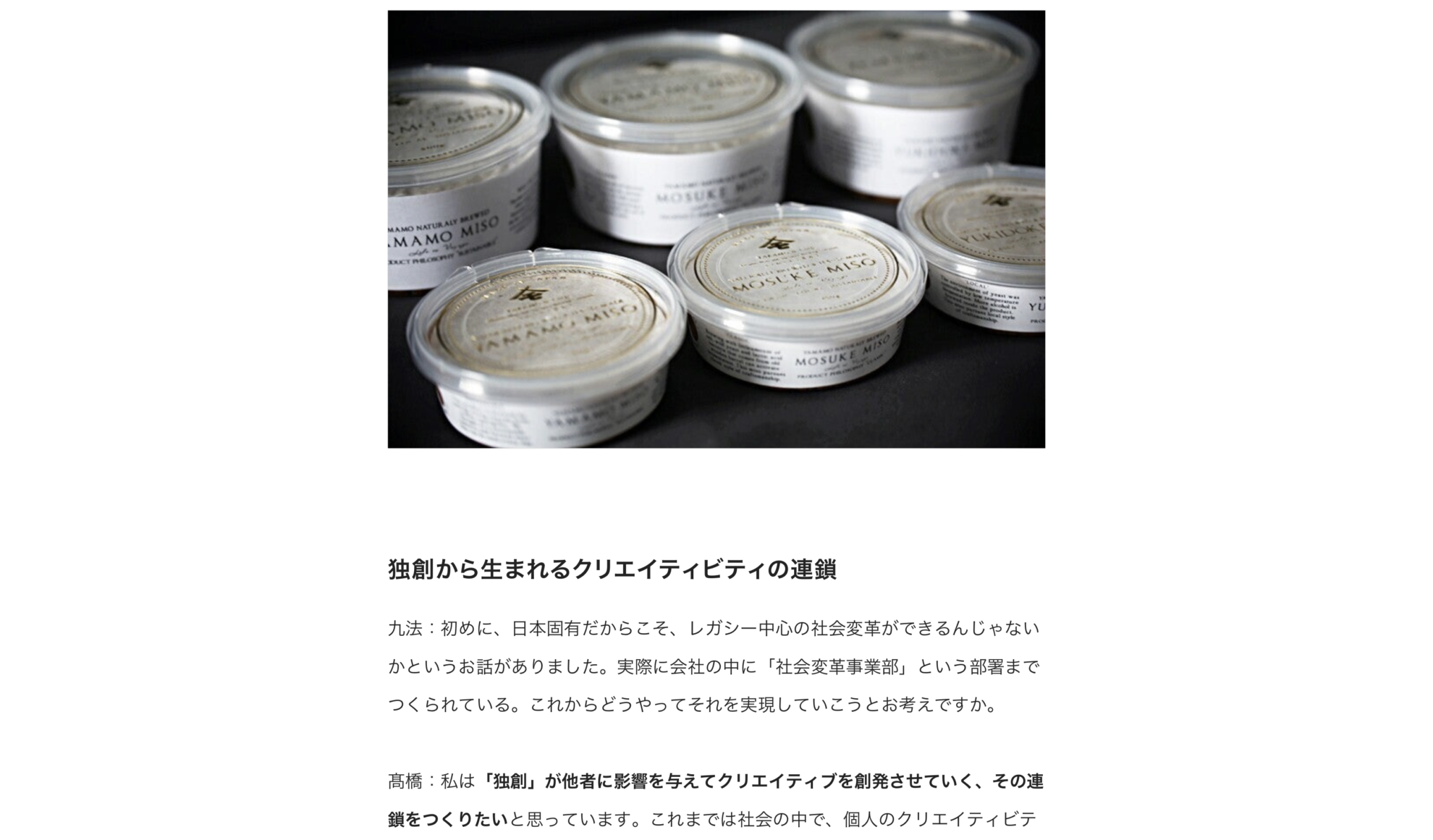
.
独創から生まれるクリエイティビティの連鎖
九法:初めに、日本固有だからこそ、レガシー中心の社会変革ができるんじゃないかというお話がありました。実際に会社の中に「社会変革事業部」という部署までつくられている。これからどうやってそれを実現していこうとお考えですか。
髙橋:私は「独創」が他者に影響を与えてクリエイティブを創発させていく、その連鎖をつくりたいと思っています。これまでは社会の中で、個人のクリエイティビティが、ある程度制限されてきたんですよね。安全性や統治の面では、そうなられると困る面もあるので。
でも、クリエイティブに対する相対的な価値を上げ、独創的なものを認められるように、社会の濃度を上げていきたいんです。そうすることで、常に新しいものが生まれ、共感を生んで、共創が生まれていくのではと思っています。まずは自分の会社の中とその周りで濃度の高い生態系をつくっていき、世界にある他の特異な地域と繋いでいきたいです。
西垣:他にそういったクリエイティブな濃度を上げていきたいと考えている企業や団体に対して、なにか支援をされたりもなさってるんですか。
髙橋:相談があってアドバイスをすることはあります。今後やってみたいこととしては、例えばトヨタの「カイゼン」のような形で、企業研修プログラムを作れないかと考えています。日本でクリエイティブな濃度を上げるという意味では、経営層だけでなくやはりボトムアップも大切。中小企業でもちゃんと実装できるプログラムをつくりたいんです。先行している人が経験をシェアしていかなければ、社会全体が良くなっていかないと思っています。
九法:僕らKESIKIと特許庁でも、髙橋さんのような経営者の方々の経験を言語化し、フレームとしてまとめる作業を進めています。このマップはまだ作成途上のものですが、今日髙橋さんのお話を聞いていて、ここでいうと一番左にある、企業の「人格形成」が、特に中小企業や伝統産業に携わられている方々はすごく重要になるんだろうなと改めて思いました。まさに、歴史を紐解いたり、未来を妄想したり、情熱を持つという、自分や自社を深掘りしていく部分です。
西垣:そうですね。髙橋さんは、新しい企業文化を創るという部分がご自身の立ち位置だと思われながらも、その文化の醸成は、歴史や強みを棚卸しするとそういうところに根ざしていて、まさにレガシーの再構築をなさってきたんだなと感じました。
九法:「デザイン経営」は、「人間中心主義」とか「ユーザー志向」という言葉とセットで語られること多いんですが、どうやってお客さんの気持ちに寄り添って製品を開発するのかという部分に目がいきがちです。もちろん、それは欠かせないプロセスなのですが、一方で自分自身の成り立やアイデンティティを掘り下げていくことも大切。そこにユーザーの心を読み解くものを掛け合わせた先にこそ、新しい価値が生まれるんだろうなと感じました。
西垣:マップの真ん中には「魅力的な物語を発信する」とあるのですが、その物語ってどこからくるのかというと、文化や歴史や地域性といったものに紐づく「私たちの企業は一体何者なのか」という「人格」の部分なんですよね。そこを深掘りしている企業こそ、他社との差別化ができていくのだと思います。
髙橋:こういった機会は私にとっても有り難いし嬉しいです。定期的に今の自分の考えを反芻して、他の方のお話も取り入れていきたいので、また皆さんとお会いできる機会があるといいなと思っています。
.
A chain of creativity born from originality
Kunori: At the beginning, there was a talk that it is possible to carry out social change centered on legacy because it is unique to Japan. In fact, a department called “Social Transformation Division” has been created in the company. How do you plan to achieve that in the future?
Takahashi: I want to create a chain in which “creativity” influences others and creates emergence. Until now, individual creativity has been limited to some extent in society. In terms of safety and governance, there are some problems if that happens.
However, I would like to increase the relative value of creatives and increase the concentration of society so that creative things can be recognized. By doing so, I think that new things will always be born, empathy will be created, and co-creation will be born. First of all, I would like to create a high-concentration ecosystem in and around my company and connect with other unique regions in the world.
Nishigaki: Do you also provide any support to other companies and organizations that want to increase their creative concentration?
Takahashi: I sometimes consult with you and give you advice. What I would like to do in the future is to create a corporate training program in the form of Toyota’s Kaizen, for example. In terms of increasing the creative concentration in Japan, not only management but also bottom-up is important. I want to create a program that even small and medium-sized enterprises can implement properly. I don’t think society as a whole will improve unless the people who are ahead of us share their experiences.
Kunori: We at KESIKI and the Japan Patent Office are also working on verbalizing the experiences of managers like Mr. Takahashi and putting them together as a frame. This map is still in the process of being created, but today I heard Mr. Takahashi’s story, and the “personality formation” of the company on the far left here is especially involved in small and medium-sized enterprises and traditional industries. I thought again that the people who are there will be very important. It is exactly the part that digs deep into yourself and your company, unraveling history, delusion of the future, and having passion.
Nishigaki: That’s right. Mr. Takahashi seems to be in the position of creating a new corporate culture, but the fostering of that culture is rooted in the inventory of history and strengths, and it is exactly the reconstruction of the legacy. I felt that it was done.
Kunori: “Design management” is often talked about as a set with the words “anthropocentric” and “user-oriented”, but the focus is on how to develop products that are close to the feelings of customers. I tend to live. Of course, it’s an indispensable process, but it’s also important to delve into your own origins and identities. I felt that new value would be created only by multiplying it with something that understands the user’s mind.
Nishigaki: In the middle of the map, it says “to tell a fascinating story,” but where does that story come from? “Who is our company?” That is linked to culture, history, and regional characteristics. It’s the “personality” part of “Is it?” I think that companies that are digging deeper into this will be able to differentiate themselves from other companies.
Takahashi: I’m grateful for this opportunity. I would like to regularly reflect on my current thoughts and incorporate the stories of other people, so I hope to have the opportunity to meet with you again.
.
源於創意的一連串創造力
九法:最初,有傳言說有可能進行以遺產為中心的社會變革,因為它是日本獨有的。實際上,公司中已經建立了一個名為“社會轉型部”的部門。您如何計劃將來實現這一目標?
高橋:我想建立一條“創造力”影響他人並創造力量的鏈條。到目前為止,社會上個人創造力受到了一定程度的限制。在安全性和治理方面,如果發生這種情況,就會出現一些問題。
但是,我想增加創意者的相對價值,並增加社會的集中度,以便能夠認可創意者。通過這樣做,我認為新事物將永遠誕生,同情心將會創造,共同創造將會誕生。首先,我想在公司內部和周圍創建一個高濃度的生態系統,並與世界上其他獨特的地區建立聯繫。
西垣:您是否還向其他想要提高創意集中度的公司和組織提供任何支持?
高橋:我有時會向您諮詢並提供建議。我將來要做的是以豐田Kaizen的形式創建企業培訓計劃。在提高日本的創意集中度方面,不僅管理層而且自下而上都很重要。我想創建一個程序,甚至中小企業也可以正確實施。我認為,除非我們前面的人分享自己的經驗,否則整個社會不會改善。
九法:我們在KESIKI和日本專利局的工作也正在努力發揚高橋先生這樣的管理人員的經驗,並將其作為框架。該地圖仍在創建過程中,但今天我聽到了高橋先生的故事,最左邊的公司的“人格形成”尤其涉及中小企業和傳統行業。同樣,在那裡的人將非常重要。這正是深入挖掘自己和公司,揭示歷史,對未來的幻想以及充滿激情的部分。
西垣:是的。高橋先生似乎可以創造一種新的企業文化,但是這種文化的培育根植於歷史和實力的盤點中,而這恰恰是對遺產的重建,我認為這已經完成了。
九法:“設計管理”通常以“以人為中心”和“以用戶為中心”的組合來談論,但重點是如何開發與客戶的感受接近的產品,我傾向於生活。當然,這是必不可少的過程,但深入研究自己的出身和身份也很重要。我覺得只有將其乘以能夠理解用戶思想的東西,才能創造出新的價值。
西垣:在地圖的中間,上面寫著“講一個有趣的故事”,但是那個故事是從哪裡來的呢?“我們的公司是誰?”這與文化,歷史和地區特徵有關。這就是“個性”。 ”的一部分,“是嗎?”我認為正在深入研究的公司將能夠與其他公司區分開。
高橋:我很感謝這次機會。我想定期反思我當前的想法,並吸收他人的故事,因此我希望有機會再次與您見面。
.
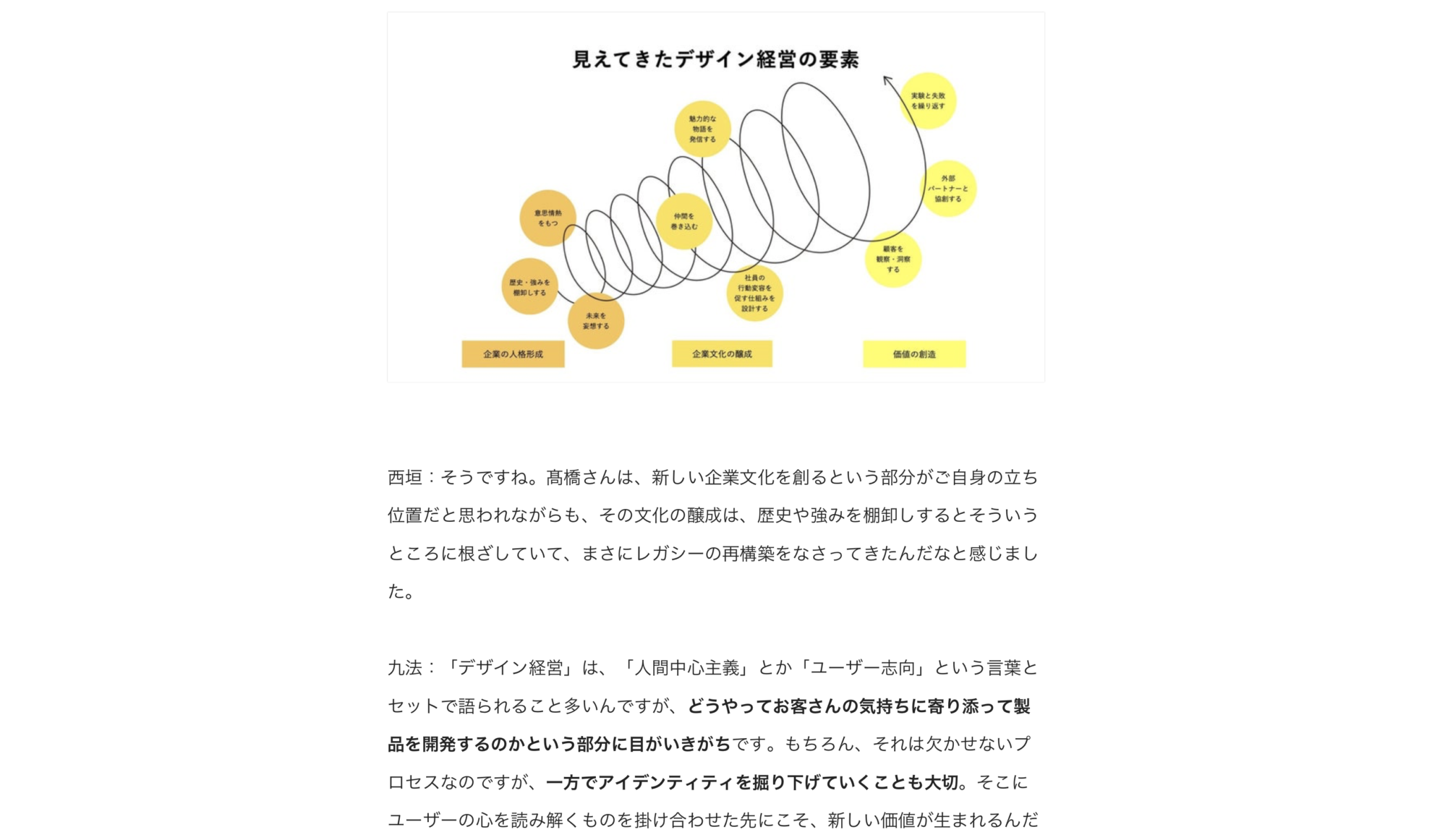
.
「正直、デザイン経営という言葉に違和感がある」
高橋さんは、事前の打ち合わせの中でそうおっしゃっていました。
「過去を肯定する」「自己に深く潜る」「事象を主観で検証する」「個の独創を解放する」。髙橋さんは、まるでアーティストのように、自分自身と対話をしながら社会と向き合い、強い意志と情熱をもって経営をされています。
デザイン思考の次はアート思考だ、という話も、最近ではよく聞かれます。どちらが正しいか。それは、単に定義の問題だと私たちは考えます。
ただ、ひとつ言えること。
デザインが「ユーザー志向」、アートが「自身の哲学や信念」として捉えられているならば、デザインはもっとアートすることが必要だ。高橋さんの話は、私たちにそう気づかせてくれました。
.
“Honestly, the word design management feels strange.”
Mr. Takahashi said so in a preliminary meeting.
“Affirm the past,” “dive deep into oneself,” “subjectively verify events,” and “release individual creativity.” Mr. Takahashi, like an artist, faces society while interacting with himself, and is managed with a strong will and passion.
Recently, it is often said that design thinking is followed by art thinking. Which is correct? We think it’s just a matter of definition.
However, one thing can be said.
If design is perceived as “user-oriented” and art as “own philosophy or belief,” design needs to be more artistic. Mr. Takahashi’s story made us realize that.
.
“老實說,設計管理這個詞感到很奇怪。”
高橋先生在初步會議上這樣說。
“確認過去”,“深入研究自己”,“主觀地驗證事件”和“釋放個人創造力”。 高橋先生像一個藝術家一樣,在與自己互動的過程中面對社會,並且擁有堅強的意志和熱情。
近來,人們常說設計思維緊隨藝術思維之後。 哪個是正確的? 我們認為這只是定義問題。
但是,可以說一件事。
如果將設計視為“面向用戶”,將藝術視為“自己的哲學或信念”,則設計必須更具藝術感。 高橋先生的故事使我們意識到了這一點。
.
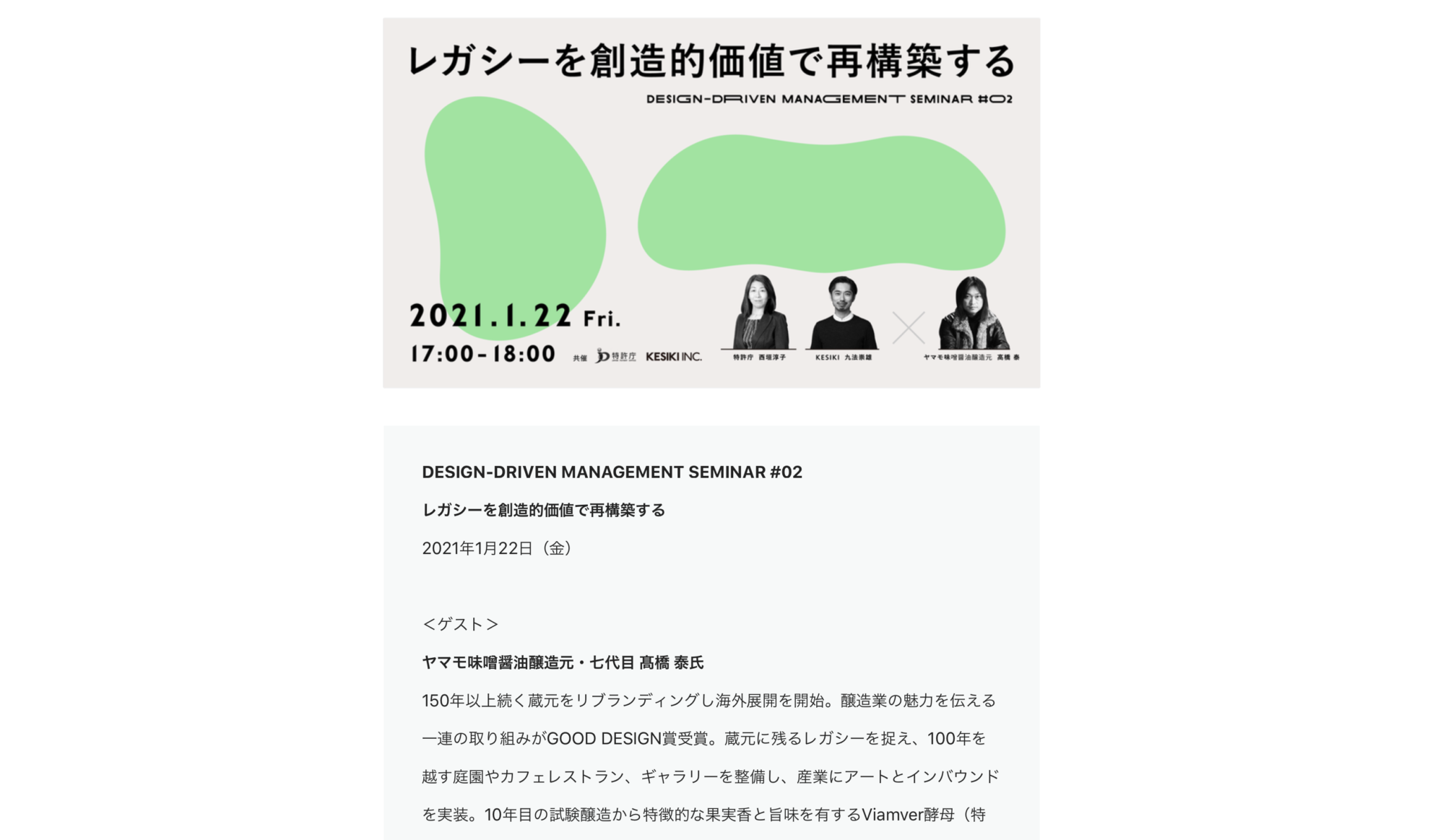
DESIGN-DRIVEN MANAGEMENT SEMINAR ♯02_ You Tube
.
